Depth 15 km (9.3 mi) Max. intensity XI (Extreme) Date 15 January 1934 | Magnitude 8.0 Mw Casualties 6,000–10,700 | |
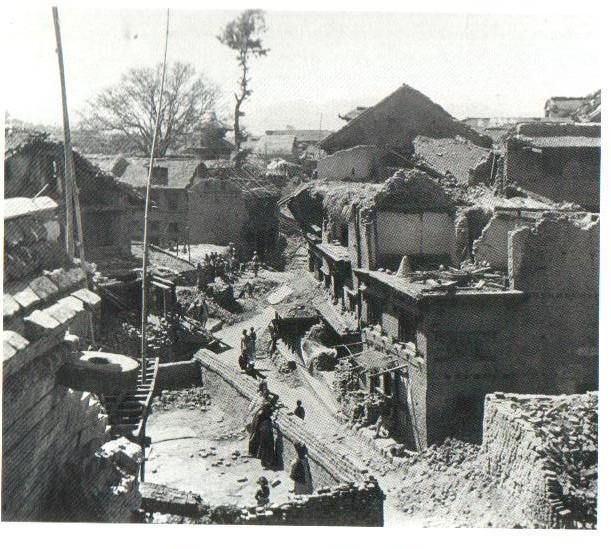 | ||
Similar 1950 Assam–Tibet earthquake, 1897 Assam earthquake, 2011 Sikkim earthquake, May 2015 Nepal earthquake, April 2015 Nepal earthquake | ||
12 000 killed in nepal bihar india 8 0 earthquake 1934 footage
The 1934 Nepal–Bihar earthquake or 1934 Bihar–Nepal earthquake was one of the worst earthquakes in the history of Nepal and Bihar, India. This 8.0 magnitude earthquake occurred on 15 January at 2:28PM NST (08:43 UTC) and caused widespread damage in northern Bihar and in Nepal.
Contents
- 12 000 killed in nepal bihar india 8 0 earthquake 1934 footage
- Earthquake
- Ground effects
- Damage
- Aftermath
- References

Earthquake

The epicentre for this event was located in eastern Nepal about 9.5 km (5.9 mi) south of Mount Everest. The areas where the most damage to life and property occurred extended from Purnea in the east to Champaran in the west (a distance of nearly 320 km (200 mi)), and from Kathmandu in the north to Munger in the south (a distance of nearly 465 km (289 mi)). The impact was reported to be felt in Lhasa to Bombay, and from Assam to Punjab. The earthquake was so severe that in Kolkata, around 650 km (404 mi) from epicenter, many buildings were damaged and the tower of St. Paul's Cathedral collapsed.
Ground effects
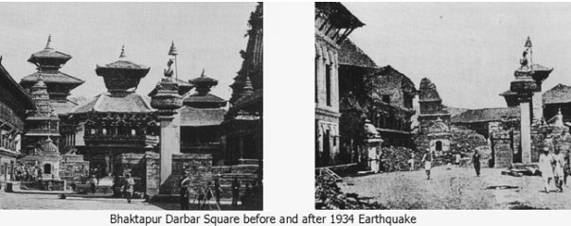
One noteworthy phenomenon of this earthquake was that sand and water vents appeared throughout the central vents of the earthquake area. The ground around these sand fissures subsided, causing more damage. Extensive liquefaction of the ground took place over a length of 300 km (called the slump belt) during the 1934 Bihar-Nepal earthquake, in which many structures went afloat.
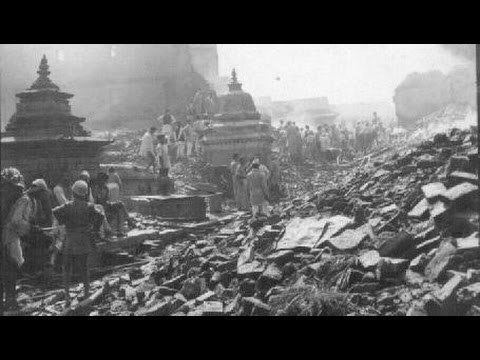
In Muzzafarpur, sand fissures erupted at several places in town. The wells were choked with sand, while water levels in tanks became shallower due to sand deposited in the tank beds. Most of the buildings in Muzzafarpur were damaged. All the Kutcha buildings collapsed, while other buildings suffered damage due to sinking and cracking of the ground.
Damage
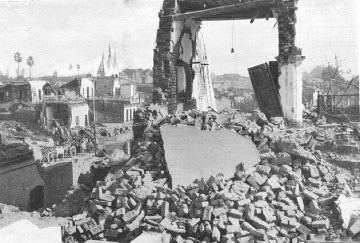
The three major towns of the Kathmandu Valley in Nepal—Kathmandu, Bhaktapur and Patan—were severely affected and almost all the buildings collapsed. Large cracks appeared in the ground and several roads were damaged in Kathmandu; however, the temple of Pashupatinath, the guardian deity of Nepal, escaped any damage.
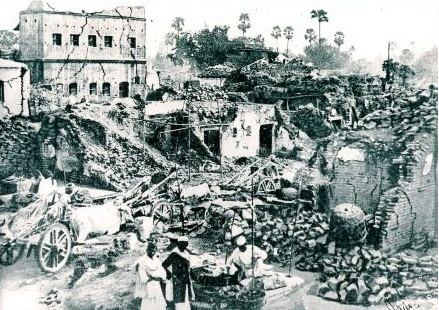
In Sitamarhi, not a single house was left standing. In Patna, only one castle remained standing, with the rest of the city being turned to rubble. In Rajnagar, near Madhubani, all the Kutcha buildings collapsed. The buildings of Darbhanga Raj, including the famous Naulakha Palace, were severely damaged. In Jharia the earthquake led to further spread of underground fire. The town of Birgunj was destroyed, along with its telephone line to Kathmandu.
The number of deaths was 10,700 to 12,000 with 7,253 recorded in Bihar.
A 1935 work by Major General Brahma Shamsher documenting the event, Nepalko Maha Bhukampa 1990, stated that this was Nepal's most destructive earthquake in living memory, and praised the Nepalese Army for its work in relief efforts.
Aftermath
Mahatma Gandhi visited the Bihar state. He wrote that the Bihar earthquake was providential retribution for India's failure to eradicate untouchability. In Bihar, Sri Babu (Shri Krishna Sinha)and the other great leader Anugrah Babu (Anugrah Narayan Sinha), threw themselves into relief work.
